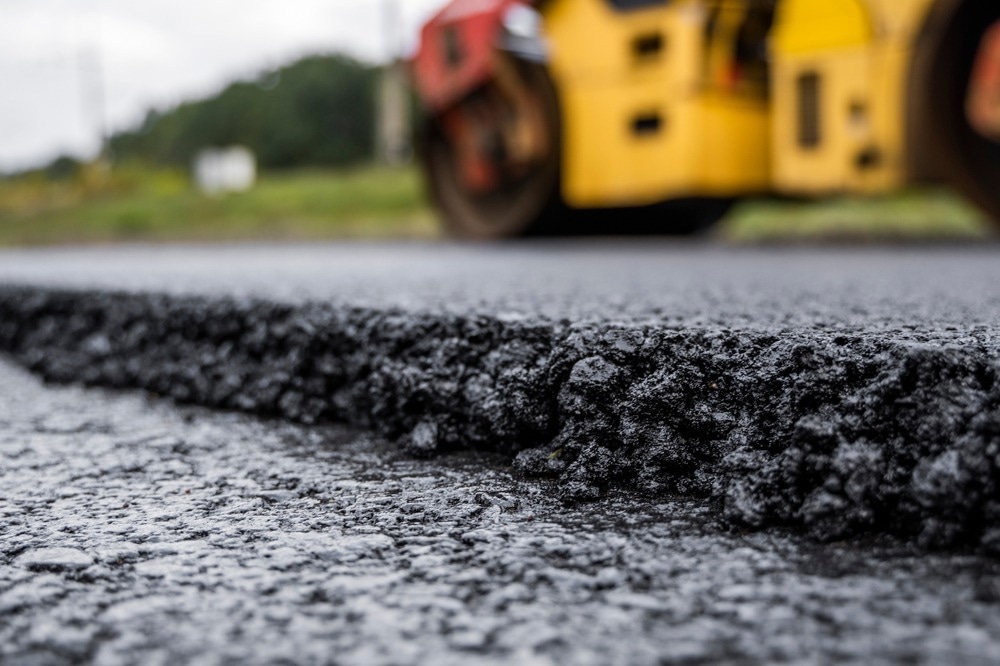A paper recently published in the journal Construction and Building Materials investigated the steady-state deformation (SD) rate of asphalt concrete (AC) used for highway construction.

Study: Steady-state deformation of AC. Image Credit: Volodymyr_Shtun/Shutterstock.com
Background
Asphalt concrete (AC) is primarily used to construct the strong upper pavement layers of highways. Road AC pavement (RACP) is continuously subjected to mechanical loads from vehicles during its long service life. Additionally, atmospheric factors such as weather and climatic conditions and hydrological and ground factors also influence its operation.
Thus, an AC must satisfy several important performance characteristics to ensure that the AC pavement can maintain its strength when subjected to vehicle loads and these factors. Relevant standards are often used to standardize the admissible limit values of these characteristics.
The resistance of the AC to shear strains is one of the critical performance characteristics. A road AC pavement must possess sufficient resistance to shear strains during its entire service life to ensure that the accumulated rut depth remains below the admissible value under the repeated mechanical actions by the wheels of vehicles, specifically heavy vehicles.
Typically, large numbers of heavy vehicles in the road traffic and warmer climate increase the plastic strains on the RACPs. Studies have shown that the accumulated permanent strain is also well correlated with the AC viscosity. Viscosity is the key characteristic of a viscoelastic material such as AC, and it connects the shear stress with the rate of shear strain.
The quantitative and qualitative information about the viscosity and shear strain of a viscoelastic material such as AC can be obtained using the static loading methods by considering both rheology and viscoelasticity. The creep test is one of the simple and fundamental test methods that can be performed to determine the shear strain and viscosity of a viscoelastic material.
The Study
In this study, researchers thoroughly investigated the steady-state deformation (SD) rate of AC at different temperatures and stress values between 0.0081 MPa to 3.0 MPa.
Researchers obtained the fundamental expressions for the viscosity and SD rate of the AC and a simplified expression for the SD rate of the AC for practical use and formulated a new stress substitution principle.
A fine-grained hot dense type B AC was used for investigation under laboratory conditions. A road viscous bitumen with penetration grade 100-130 was utilized to prepare the AC. The bitumen content was 4.8 % by weight of dry mineral material in the AC.
50x50x150 mm AC samples were used for creep test at direct tension at + 60 oC, +48 oC, +36 oC, +24 oC, +12 oC, 0 oC, −12 oC and −24 oC temperatures to investigate SD of the AC.
Multiple stress levels were selected for every temperature, and all tested AC samples were under the applied load to failure. The applied temperature and load were kept constant throughout the testing period for all 241 samples. A device specially invented and assembled was employed for the test of AC samples at different constant stresses and temperatures.
Observations
The fine-grained hot dense AC traditionally used for road construction deformed under the impact of constant stress at a constant temperature during some period in a steady-state regime/with a constant strain rate.
The dependence of the SD rate on the stress was described with high accuracy for all considered temperatures by the power function ε˙II = A⋅σn, where ε˙II denoted the SD rate, σ denoted the stress, and A and n/power exponent were correlation coefficients of physical nature.
The coefficient A was numerically equal to the AC SD rate at one MPa stress. The power exponent n characterized the rapidity of the SD rate variation corresponding with the stress variation.
In the tested AC samples, the power exponent n decreased two times while the coefficient A increased for eight orders when the temperature was gradually increased from − 24 ◦C to + 60 ◦C, indicating that the SD rate increased while the rate of the stress impact on the SD rate decreased with the increasing temperature.
A fundamental expression was obtained that linked the SD rate of the AC with its temperature, stress, and viscosity. The activation energy values of one mol and one kinetic unit viscous deformation of the AC were 190.93 kJ/mol and 31.71⋅10-23 kJ, respectively.
A simplified expression, ε˙II = (23.14⋅Tc − 587.88)⋅σ3.605, was obtained for the SD rate of the AC for practical use. Tc represented the temperature in Celsius. The creep test can be considered a suitable alternative for determining the viscosity of materials experimentally.
In the semi-logarithmic coordinates, the graphs for the dependence of the AC SD rate on a temperature at different stresses represent the parallel curves. In place of multiple curves, a single curve that corresponds to one specific stress value can be obtained by shifting the parallel curves along the temperature axis. This property allowed the formulation of the stress-substitution principle.
More from AZoM: How is 3D Printing Changing the Textile Industry?
Disclaimer: The views expressed here are those of the author expressed in their private capacity and do not necessarily represent the views of AZoM.com Limited T/A AZoNetwork the owner and operator of this website. This disclaimer forms part of the Terms and conditions of use of this website.
Source:
Abu, B. D., Iskakbayev, A. I., Teltayev, B. B. Steady-state deformation of AC. Construction and Building Materials 2022. https://doi.org/10.1016/j.conbuildmat.2022.128754